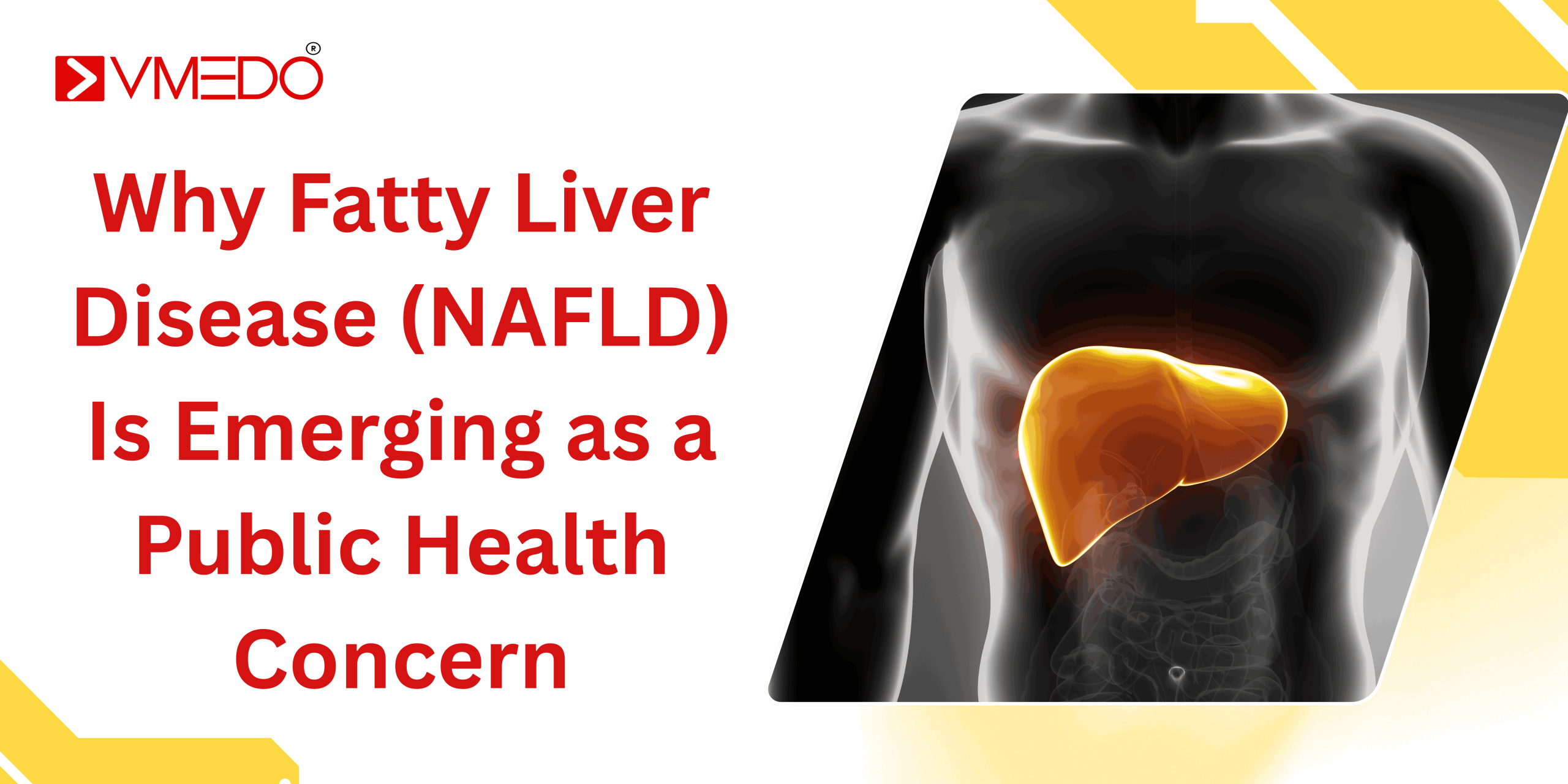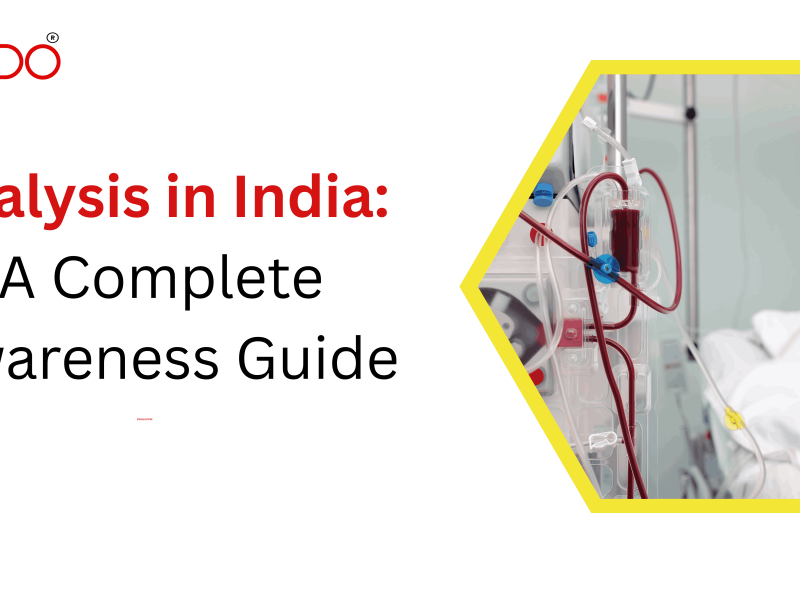In recent years, Why Fatty Liver Disease (NAFLD) Is Emerging as a Public Health Concern has become an important question for doctors, researchers, and policymakers alike. Non-Alcoholic Fatty Liver Disease (NAFLD), once considered a rare condition, is now one of the most common liver disorders worldwide, silently affecting millions of people. What makes it particularly alarming is its strong link to lifestyle factors such as poor diet, obesity, and lack of physical activity, along with its potential to progress into severe liver complications. As cases continue to rise across all age groups, NAFLD is no longer an individual health issue—it is a growing public health challenge that requires urgent attention, awareness, and preventive strategies.
Understanding NAFLD
Non-Alcoholic Fatty Liver Disease (NAFLD) is a condition in which fat accumulates in the liver cells, not due to alcohol consumption but because of metabolic and lifestyle factors. A healthy liver contains little to no fat, but when more than 5–10% of the liver’s weight is made up of fat, it is considered fatty liver disease.
NAFLD progresses in stages:
-
Simple Steatosis (Fatty Liver): Fat builds up in the liver, but there is little or no inflammation or damage.
-
Non-Alcoholic Steatohepatitis (NASH): The fat accumulation leads to liver inflammation and damage to liver cells.
-
Fibrosis: Continued inflammation causes scar tissue to form in the liver.
-
Cirrhosis: Extensive scarring leads to severe liver dysfunction, which may result in liver failure or liver cancer.
Why NAFLD Is a Public Health Concern
1. Rapid Increase in Cases
NAFLD has reached epidemic proportions. Globally, it is estimated that nearly 25–30% of the adult population is affected, and the numbers are steadily rising. In many countries, NAFLD has overtaken alcohol-related liver disease as the leading cause of liver problems.
2. Silent Nature of the Disease
Most individuals with NAFLD have no obvious symptoms in the early stages. Fatigue, mild discomfort, or digestive issues may appear, but they are often overlooked. By the time patients seek medical attention, significant liver damage may have already occurred.
3. Link to Lifestyle Diseases
NAFLD is strongly associated with modern lifestyle conditions such as:
-
Obesity
-
Type 2 Diabetes
-
High Cholesterol and Triglycerides
-
Hypertension
Because of these connections, NAFLD is not just a liver disease but a reflection of the global rise in metabolic disorders.
4. Economic Burden
Treating NAFLD and its complications, such as cirrhosis or liver transplants, places a massive strain on healthcare systems. The disease also reduces productivity due to illness and disability, creating a broader economic impact.
5. Rising Cases in Children
Disturbingly, NAFLD is no longer limited to adults. Childhood obesity has led to an increase in fatty liver cases among children and teenagers, raising concerns about long-term health consequences.
Risk Factors for NAFLD
Not everyone develops NAFLD, but certain risk factors significantly increase the likelihood:
-
Obesity (especially abdominal obesity)
-
Type 2 Diabetes and Insulin Resistance
-
Sedentary lifestyle
-
Unhealthy diet rich in sugar and processed foods
-
Genetic predisposition
-
Polycystic Ovary Syndrome (PCOS)
-
Sleep apnea
-
High cholesterol or triglycerides
Symptoms and Warning Signs
NAFLD is often called a “silent disease” because it can develop without noticeable symptoms. However, in some cases, people may experience:
-
Fatigue and weakness
-
Mild pain or discomfort in the upper right abdomen
-
Unexplained weight loss
-
Enlarged liver (detected by a doctor during physical examination)
In advanced stages such as NASH or cirrhosis, symptoms may include:
-
Yellowing of the skin and eyes (jaundice)
-
Swelling in the legs and abdomen
-
Spider-like blood vessels on the skin
-
Confusion or difficulty concentrating
Complications of Untreated NAFLD
If left unmanaged, NAFLD can lead to:
-
Liver Fibrosis and Cirrhosis – Severe scarring impairs liver function permanently.
-
Liver Cancer (Hepatocellular Carcinoma) – Increased risk in advanced cases.
-
Cardiovascular Diseases – Patients with NAFLD are more likely to suffer heart attacks and strokes.
-
Kidney Disease – NAFLD has been linked to reduced kidney function.
-
Increased Mortality Risk – Both liver-related and heart-related deaths are higher in patients with NAFLD.
Diagnosis of NAFLD
Doctors use a combination of medical history, blood tests, and imaging to diagnose NAFLD.
-
Blood Tests – Elevated liver enzymes (ALT and AST) may indicate liver damage.
-
Ultrasound – Can detect fat accumulation in the liver.
-
MRI or CT Scans – More detailed imaging methods.
-
Fibroscan (Elastography) – Measures liver stiffness to detect fibrosis.
-
Liver Biopsy – The most accurate test, where a small sample of liver tissue is examined under a microscope.
Management and Treatment of NAFLD
Currently, there is no single medication specifically approved for NAFLD, but the disease can be managed and even reversed in its early stages through lifestyle changes and medical care.
1. Weight Management
Losing even 7–10% of body weight can significantly reduce fat in the liver and improve inflammation.
2. Healthy Diet
-
Focus on whole grains, vegetables, fruits, and lean proteins.
-
Reduce intake of sugar, refined carbs, and processed foods.
-
Avoid excessive consumption of saturated fats and fried foods.
-
Include foods rich in omega-3 fatty acids (fish, flaxseeds, walnuts).
3. Regular Exercise
-
Aim for at least 150 minutes of moderate activity per week.
-
Both aerobic exercises (walking, cycling) and strength training are beneficial.
4. Control of Coexisting Conditions
Managing diabetes, high cholesterol, and high blood pressure is essential in controlling NAFLD progression.
5. Medications (if prescribed)
While no dedicated NAFLD drug exists yet, doctors may prescribe medicines to manage risk factors such as insulin resistance, high cholesterol, or hypertension.
6. Avoid Alcohol and Harmful Substances
Even though NAFLD is not caused by alcohol, alcohol consumption can worsen the condition.
7. Regular Monitoring
Regular liver check-ups help track disease progression and prevent complications.
Prevention of NAFLD
Since NAFLD is largely preventable, awareness and healthy habits are the strongest weapons against it.
-
Maintain a healthy body weight.
-
Exercise regularly (at least 30 minutes daily).
-
Eat a balanced diet with minimal processed foods.
-
Limit sugar-sweetened drinks.
-
Get regular health checkups, especially if you have risk factors like obesity or diabetes.
NAFLD as a Global Health Challenge
NAFLD is not just an individual health issue—it is a global epidemic. With rising obesity, diabetes, and sedentary lifestyles, the disease is spreading at alarming rates in both developed and developing nations.
Health experts are calling it the next major lifestyle-related epidemic, comparable to heart disease and diabetes. Governments, healthcare systems, and communities need to act by:
-
Promoting public awareness campaigns.
-
Encouraging early screening programs.
-
Providing access to lifestyle intervention support.
-
Training healthcare providers to identify and manage NAFLD effectively.
The Role of Public Awareness
Public health initiatives must focus on educating people about:
-
The risks of NAFLD.
-
The importance of early detection.
-
Lifestyle choices that can prevent disease progression.
Just as campaigns around smoking and heart disease changed public attitudes, awareness about NAFLD can help people make healthier decisions.
Conclusion
Non-Alcoholic Fatty Liver Disease (NAFLD) is no longer a rare condition—it has become a global health crisis. Its silent progression, strong link with lifestyle disorders, and potential for life-threatening complications make it a serious concern for individuals and healthcare systems alike.
The good news is that NAFLD is preventable and, in its early stages, even reversible. By maintaining a healthy weight, adopting a balanced diet, exercising regularly, and managing associated conditions like diabetes and high cholesterol, individuals can protect their liver health.
At the public health level, greater awareness, early screening, and stronger healthcare policies are needed to curb the rising tide of NAFLD. The sooner action is taken, the better the chances of reducing the impact of this disease on future generations.
Ultimately, your liver works tirelessly for you every day—it’s time we return the favor by making conscious lifestyle choices that protect it.



